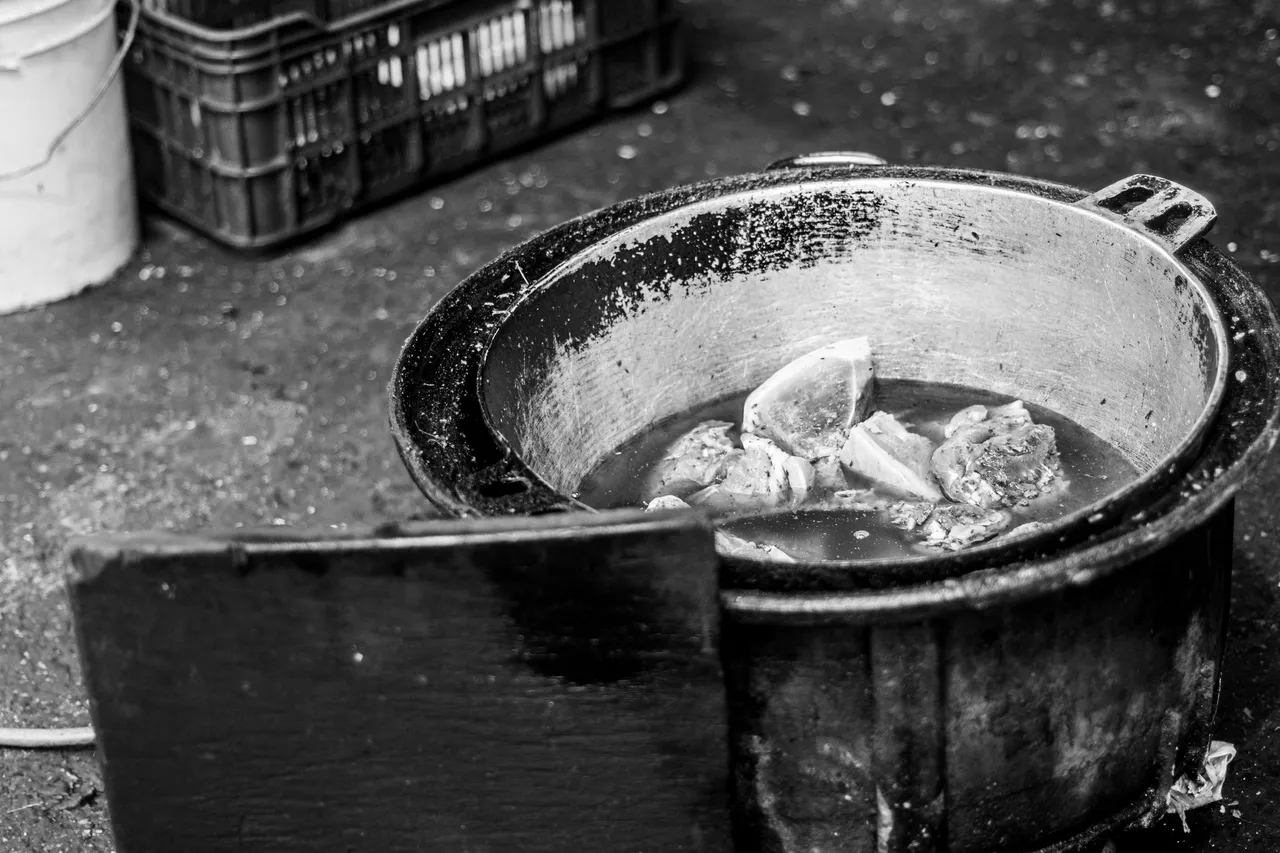
The arepa is a characteristic dish of Venezuelan gastronomy and other Latin American countries (with variations).
However, the cachapa also has its place, but it's not usually consumed daily like the arepa because its preparation is a bit more elaborate. And although different companies sell pre-cooked flour to facilitate the process (just like with the arepa), the taste of pre-cooked cachapa and the traditional one is different. That's why many prefer to buy it from those who traditionally prepare it.

La arepa es un plato característico de la gastronomía venezolana y de otros países de Latinoamérica (con variaciones).
Sin embargo, la cachapa también tiene su lugar, pero no suele ser consumida a diario como la arepa porque su preparación es un poco más elaborada. Y aunque diferentes empresas venden harina precocida para facilitar el proceso (tal y como se hace con la arepa), el sabor de la cachapa precocida y la regular definitivamente es diferente. Por eso muchos prefieren comprarla a quienes las preparan de forma tradicional.
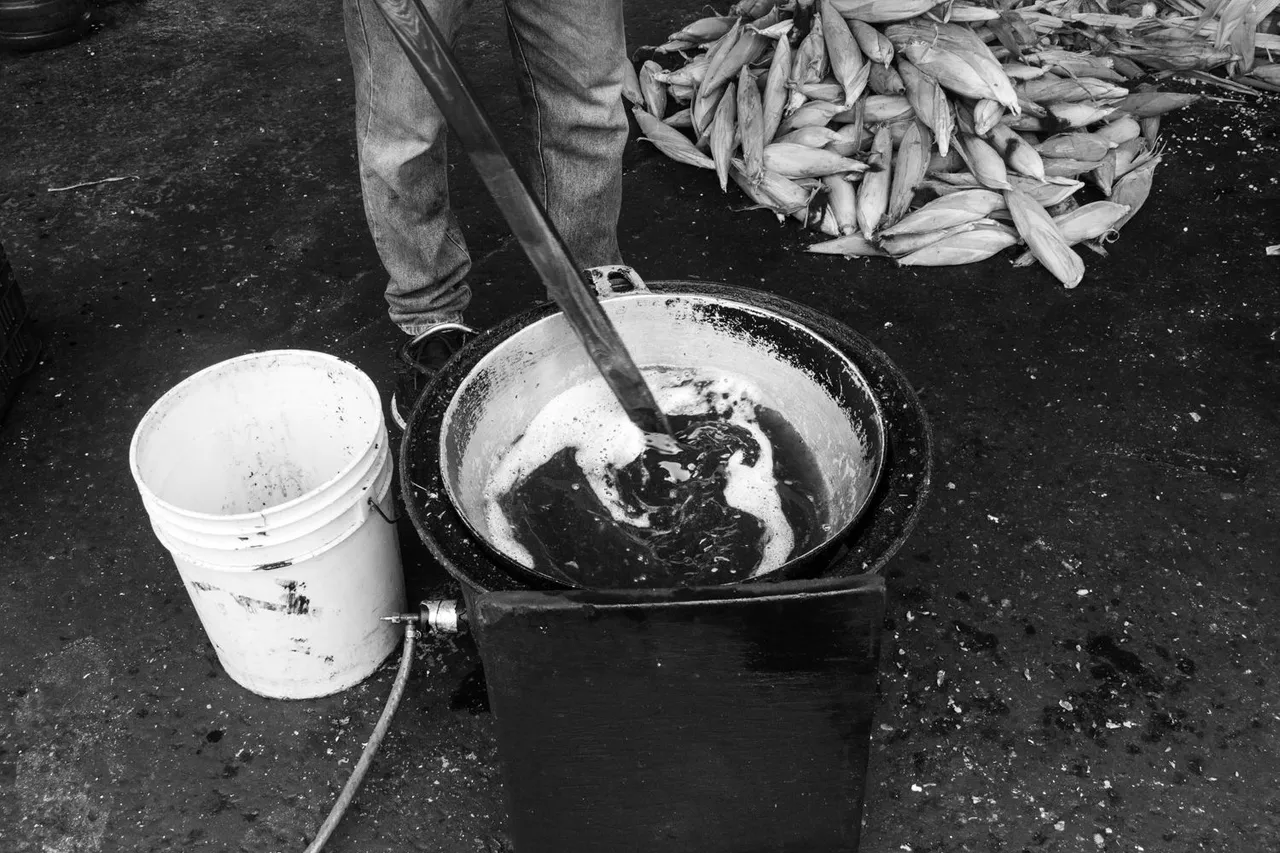
I was passing by and came across a "cachapera" (as places that prepare and sell cachapas are known), and I photographed some of their work.
Cachapa is accompanied by fried pork (chorizo, chicharrón, among others). So I saw how they prepared it, and of course, I took photos.
I also captured the arduous work involved in peeling the corn and then removing the kernels, given that this raw material is used to make the cachapa dough.
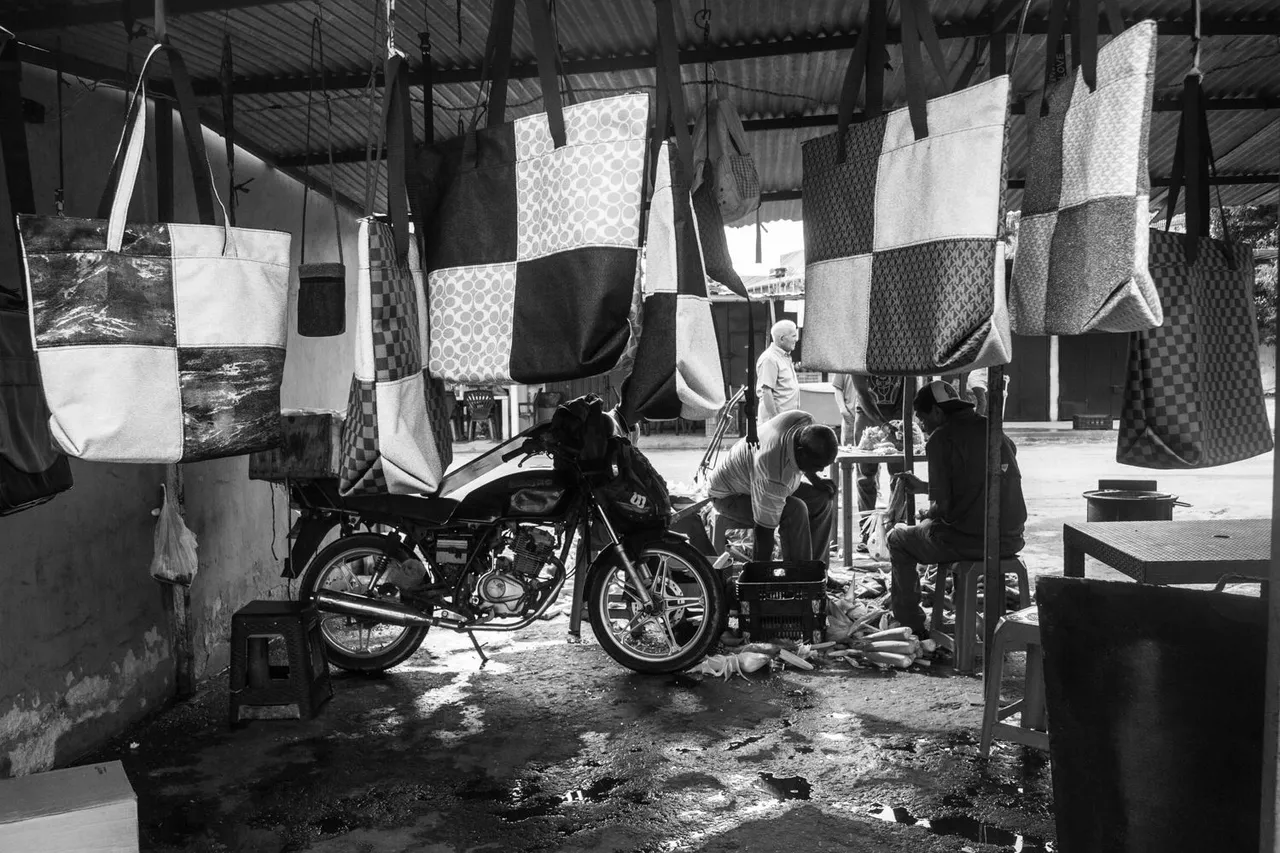
Estaba de paso y me encontré con una cachapera (como se le conoce a los lugares que preparan y venden la cachapa), y fotografié un poco su trabajo.
La cachapa va acompañada de carne frita de cerdo (chorizo, chicharrón, entre otros). Así que vi cómo la prepararon y, por supuesto, tomé fotos.
También del arduo trabajo que implica pelar el maíz para luego retirar los granos, dado que con esta materia prima se hace la masa de las cachapas.
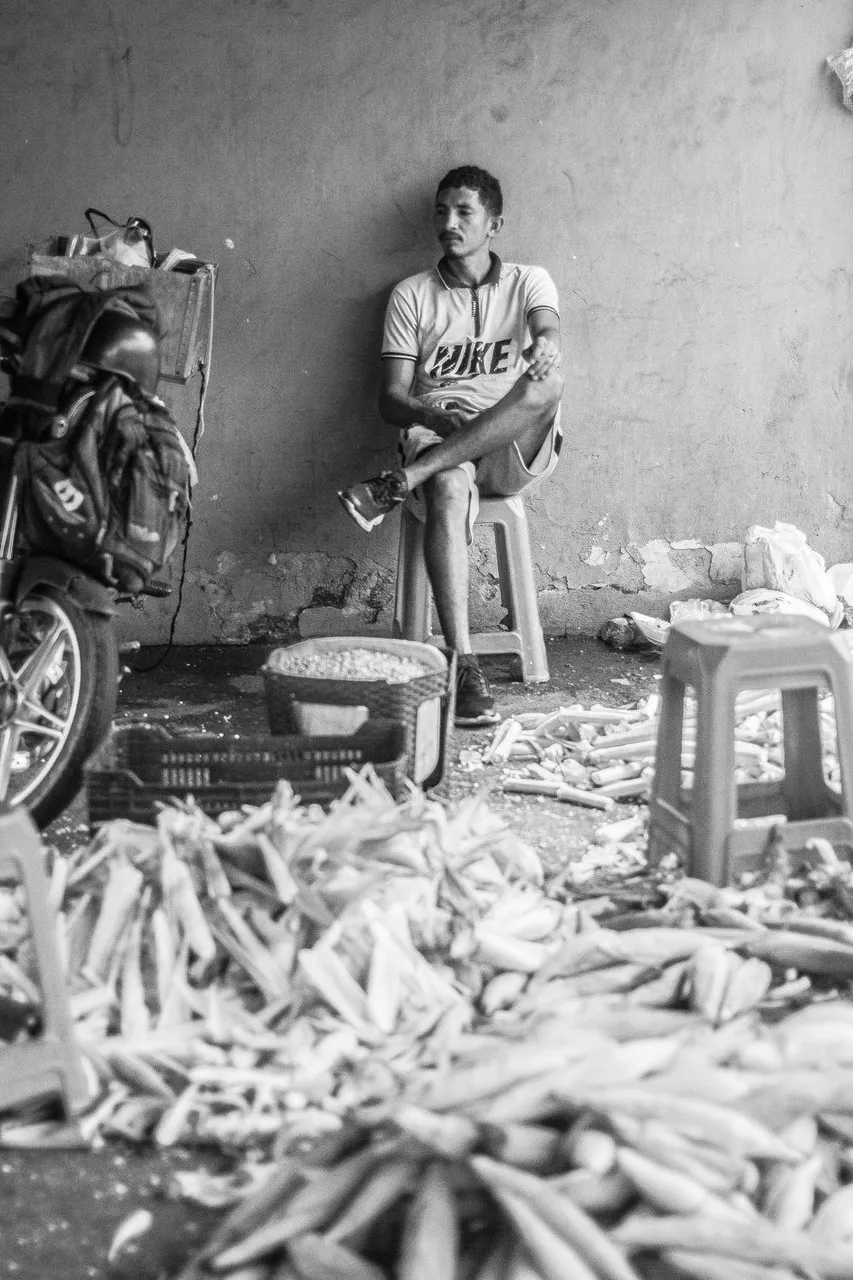
And of course, the so-called "queso de mano" (hand-made cheese), whose texture is soft and stringy (hence its other name, "queso de tela" or "cloth cheese"), because when stretched, it resembles fabric.
I couldn't take photos of it because they kept it in a refrigerator, but I would have loved to photograph how it's made (they don't make it themselves), though I hope to do so with a producer someday.
It was noon, the perfect time to serve cachapa. However, I couldn't taste it because I had other commitments, but I ate some a few days later.
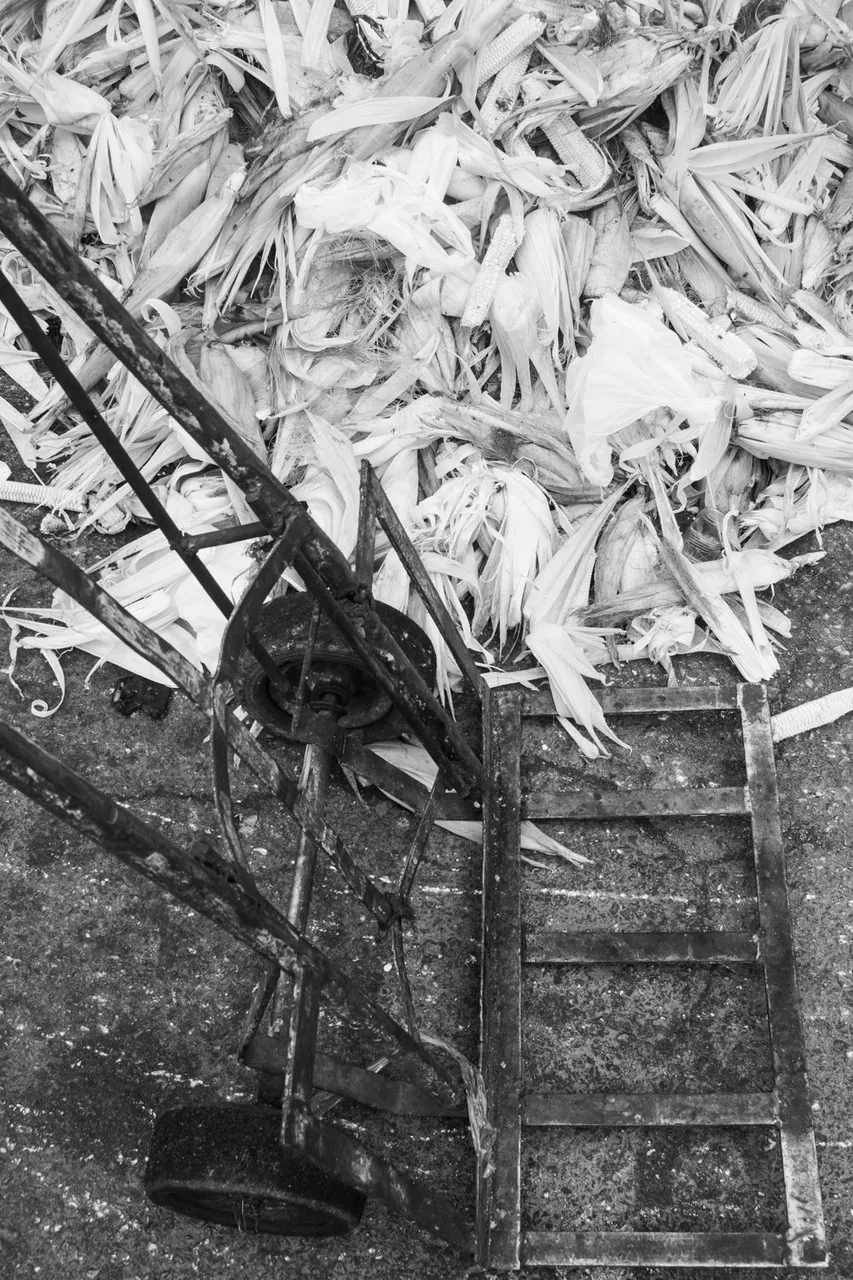
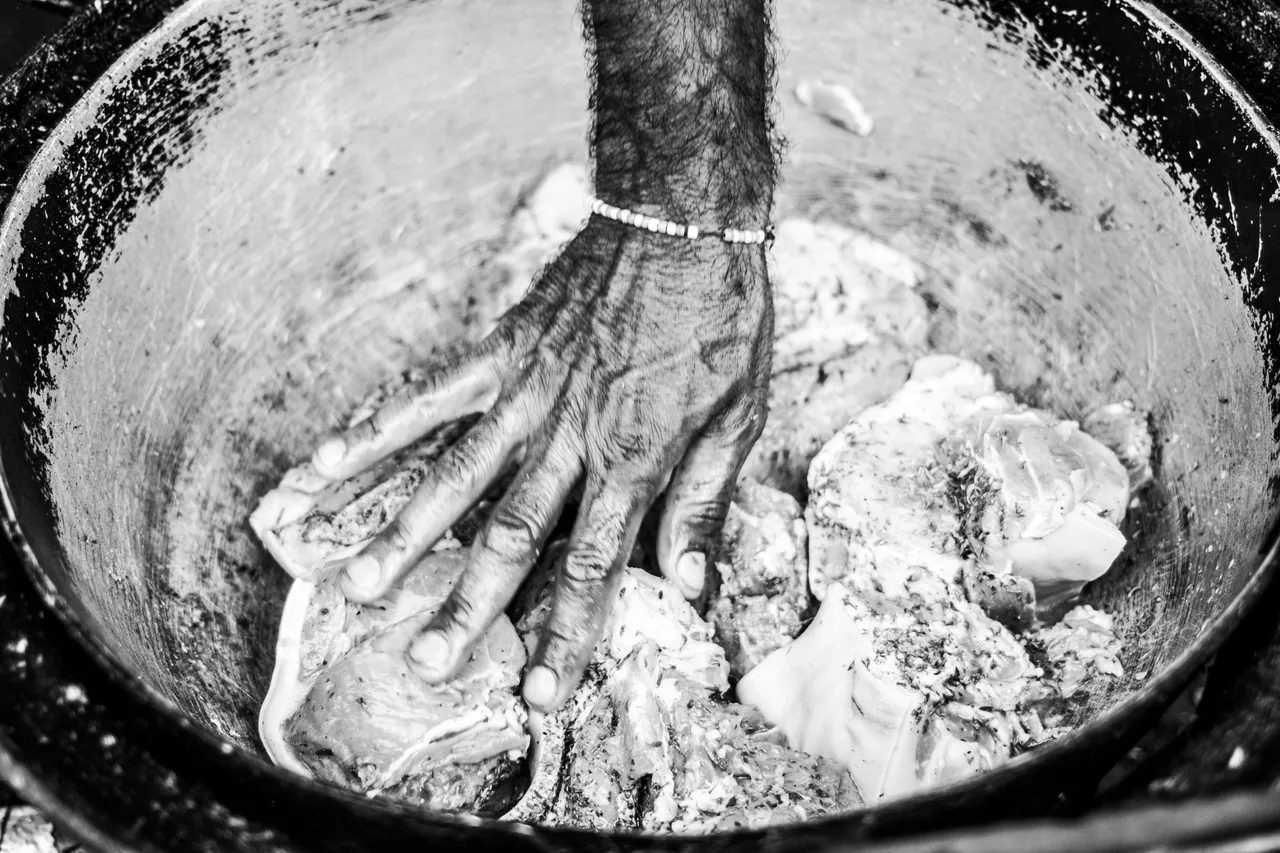
Y por supuesto, el llamado queso de mano, cuya textura es suave e hilada (de allí el otro nombre que se le da, “queso de tela”), porque al estirarse parece una prenda.
No pude tomarle fotos porque lo tenían guardado en un refrigerador, pero me hubiera encantado fotografiar cómo lo preparan (ellos no lo hacen), aunque espero hacerlo con algún productor.
Eran las 12 del mediodía, hora perfecta para servir la cachapa. No obstante, no pude degustarla porque tenía otros compromisos, pero a los días comí.
